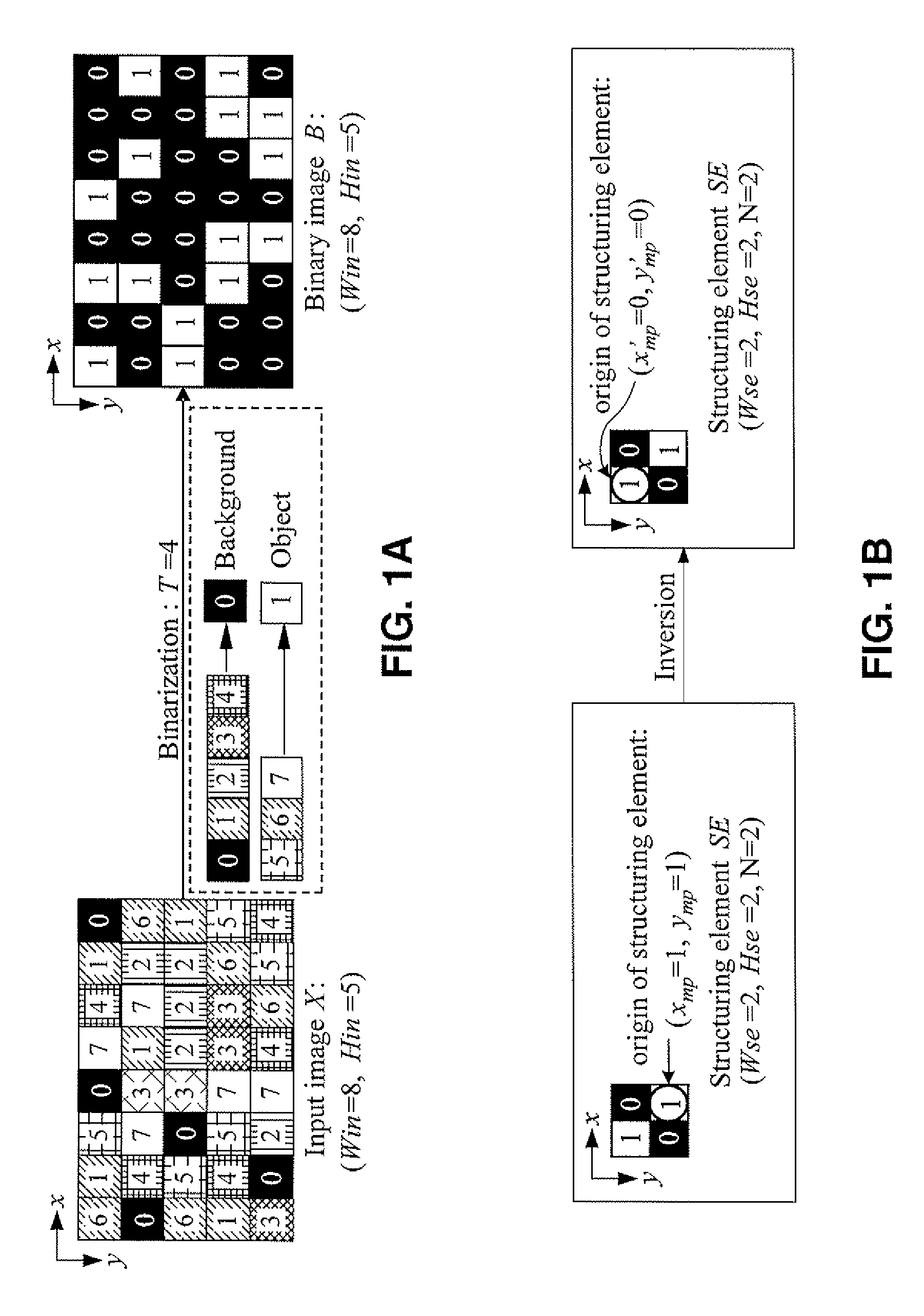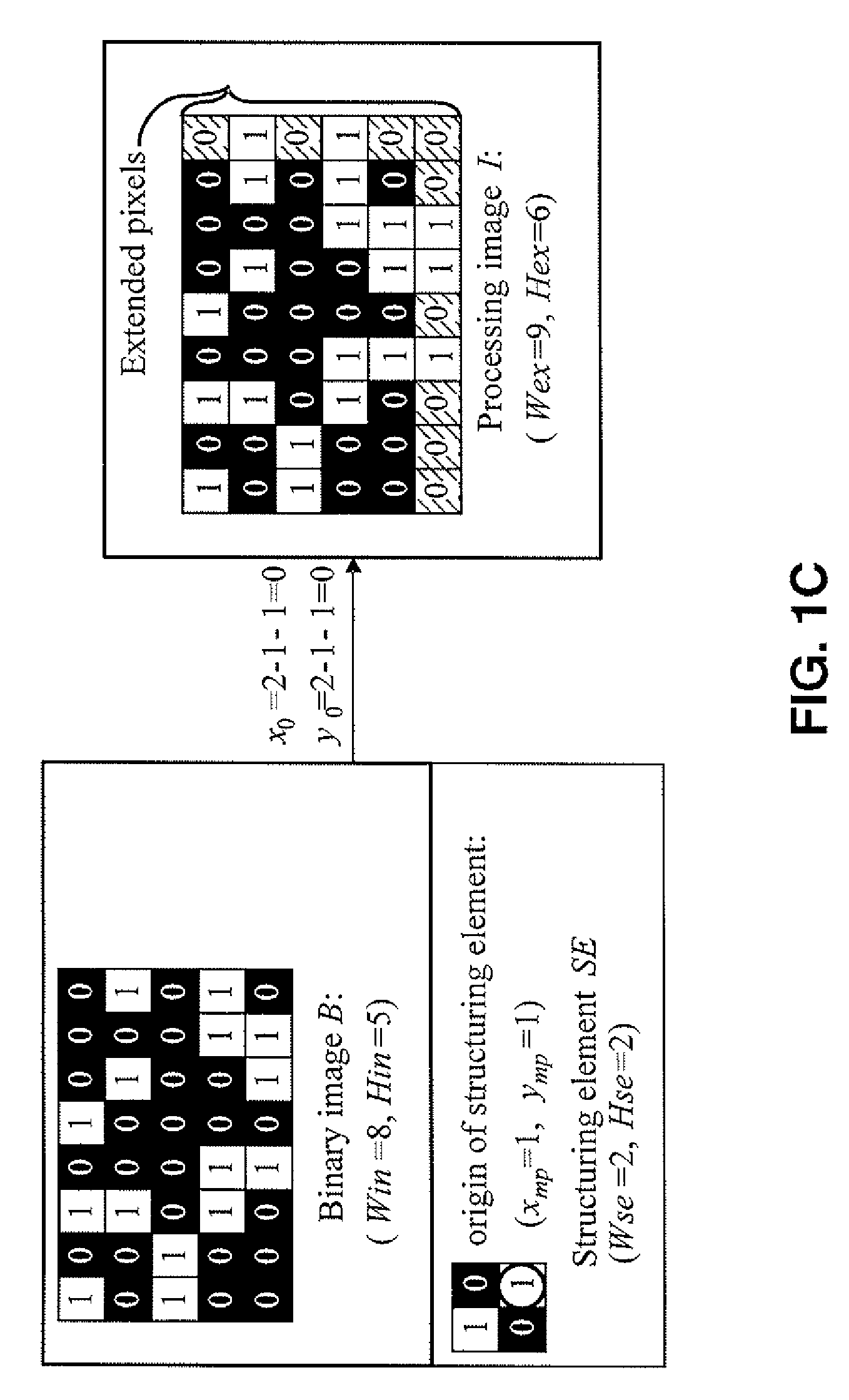Generating a dilation image utilizing parallel pixel processing
a technology pixel processing, applied in image analysis, image enhancement, instruments, etc., can solve the problems of adding additional processing time, affecting the quality of images, so as to achieve the effect of generating dilation images
- Summary
- Abstract
- Description
- Claims
- Application Information
AI Technical Summary
Benefits of technology
Problems solved by technology
Method used
Image
Examples
Embodiment Construction
[0038]FIG. 2 depicts an example of a computing environment in which the invention may be employed. Briefly, the invention is directed to performing image processing to generate and output a dilation image from an original input image. By way of example, various implementations of the invention may be inputting an original image from any one of a number of devices, such as a digital image generated by an x-ray machine, a tomogram, satellite image, digital photograph, or virtually any digital image source, and then applying the process of the invention to the input original image to obtain a dilation (thickened) image that is then output to a display device, a printer, etc. Thus, as seen in FIG. 2, the invention may be employed in an environment that includes personal computer workstation 10 or laptop computer 20 that may be connected to a network 11, which is preferably a world wide network such as the Internet, but may also be local area network (LAN). In this manner, computer works...
PUM
 Login to View More
Login to View More Abstract
Description
Claims
Application Information
 Login to View More
Login to View More - R&D
- Intellectual Property
- Life Sciences
- Materials
- Tech Scout
- Unparalleled Data Quality
- Higher Quality Content
- 60% Fewer Hallucinations
Browse by: Latest US Patents, China's latest patents, Technical Efficacy Thesaurus, Application Domain, Technology Topic, Popular Technical Reports.
© 2025 PatSnap. All rights reserved.Legal|Privacy policy|Modern Slavery Act Transparency Statement|Sitemap|About US| Contact US: help@patsnap.com



